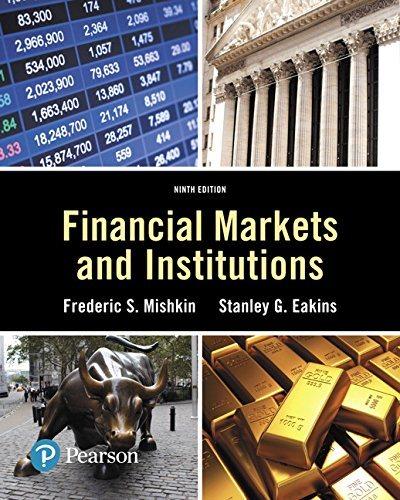Question
2. Using the dividend discount model: collect your own data: You become interested in Caterpillar (CAT). Over the last years, CAT has tended to increase
2. Using the dividend discount model: collect your own data:
You become interested in Caterpillar (CAT). Over the last years, CAT has tended to increase its dividend almost every year, but the growth rate has not been constant. You want to learn more about what is driving CATs stock price. You decide to analyze CAT dividend growth rates. On the yahoo finance CAT page go to Historical Data, then choose Dividends only under
Historical Prices. Choose a date range from July 1 2001 to now and hit Apply. You can then download the data. If, for some reason, the data is not in order you can simply sort it by date (newest to oldest). You now have data on the quarterly dividends paid by CAT starting in July 2001. You notice that the quarterly dividend tends to increase once a year. Group dividends accordingly and assign sums of quarterly payments to calendar years. Look at the Excel file PS4 to see how to do this. For example, in 2007 the dividend is 1.20. Then use the same system for earlier and later years. The spreadsheet is set up so that you just have to copy the values over.
a.What were CATs dividend payments from 2002 to 2017? (Hint: As pointed out above you find a dividend of 1.20 for 2007.)
b.What were the associated dividend growth rates? What is the average dividend growth rate over this time period (just calculate the simple average growth rate.)? What was the largest and what was the smallest growth rate? What might explain the pattern in dividend growth rates?
c.How does the expected average dividend growth rate compare to the average dividend growth if you base your calculations on the last 8 growth rates?
d.Calculate the projected dividend next year (D1) assuming that the 2018 growth rate is equal to the growth rate the last time CAT increased its dividend.
e.Find CAT stocks closing price on 5/12/2017 (either from Google or Yahoo finance). Assuming that the constant growth dividend discount model does a good job explaining the stock price, and assuming an equity cost of capital of 13.19%, what is the expected dividend growth rate g?
f.How does this growth rate compare to the average growth rate over the full sample of data you downloaded? How about the smaller sample from part c.?
g.What are the predicted prices assuming D1 from d. and the dividend growth rate from b. and c.?
h.Given your analysis, what do you conclude about the current CAT stock price?
3. Expected return and standard deviation:
a.Johnson & Johnson (JNJ) is trading at 123.64 (5/12/2017 close). JNJ is a large health care conglomerate. It has done well over the last couple of years and you think it will continue to do well. After careful analysis you conclude that in one year the price will be (90, 105, 125, 155, 175) with associated probabilities of (0.1, 0.2, 0.4, 0.2, 0.1). Looking at the companys past record you project that JNJ will pay a dividend of 3.40 (four quarterly dividends of 0.85).
(i) What is the expected return of JNJ stock?
(ii) Calculate the standard deviation of the return of JNJ stock (remember that you are using probabilities to do this, not historical data).
b.In the second sheet of the Excel file PS4 you will find historical data for IBM and CVX returns.
(i)Calculate the sample expected return and sample standard deviation for both.
(ii)What is the standard error of the sample average in each case? What is the +/- 2 standard error confidence interval of the sample average?
Step by Step Solution
There are 3 Steps involved in it
Step: 1

Get Instant Access to Expert-Tailored Solutions
See step-by-step solutions with expert insights and AI powered tools for academic success
Step: 2

Step: 3

Ace Your Homework with AI
Get the answers you need in no time with our AI-driven, step-by-step assistance
Get Started


